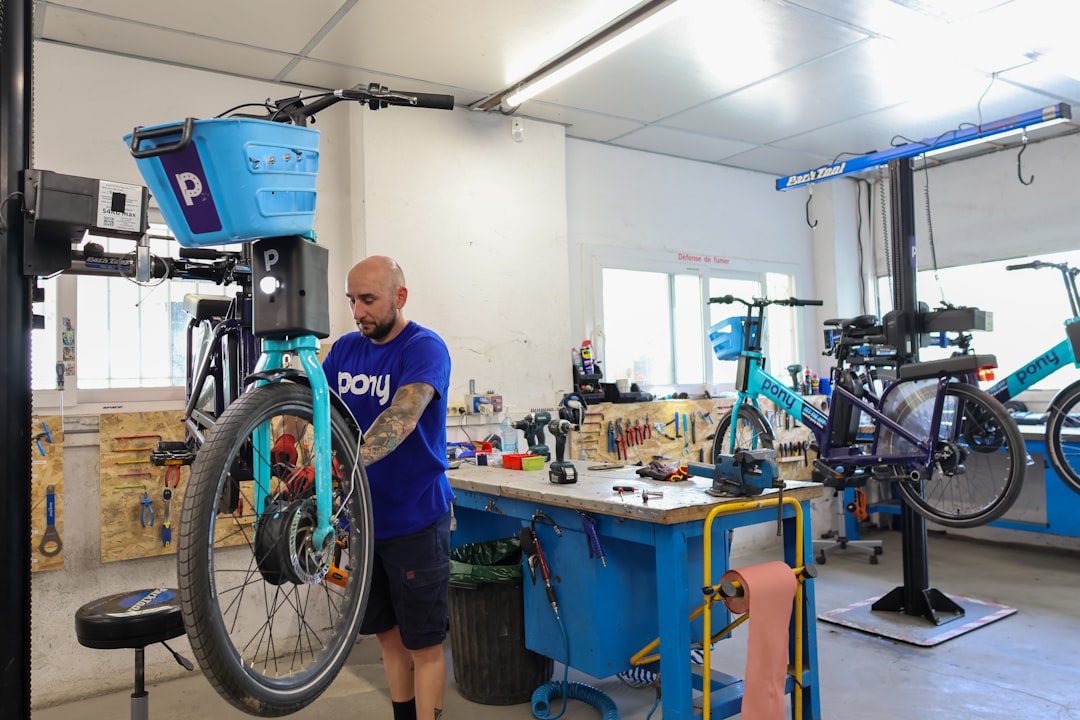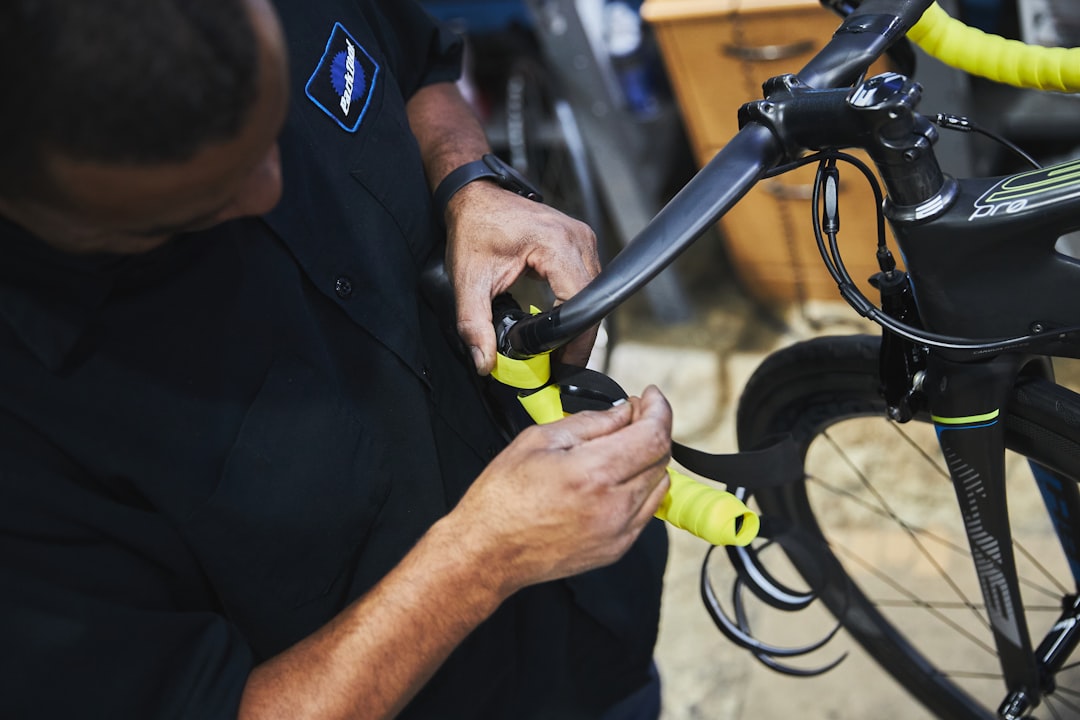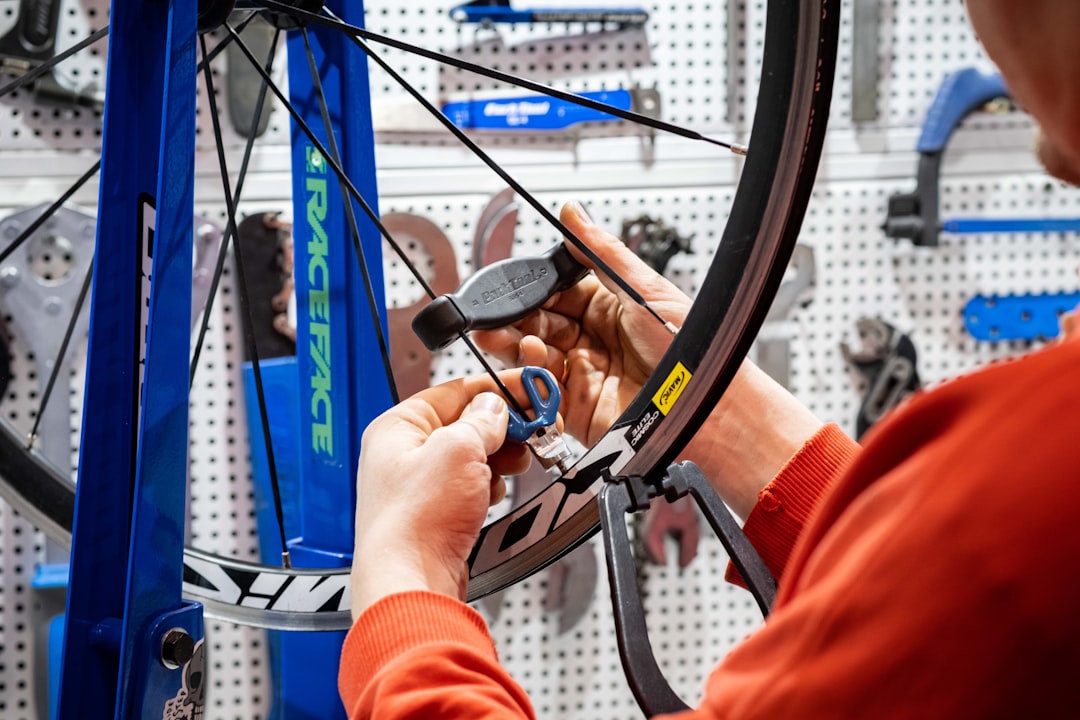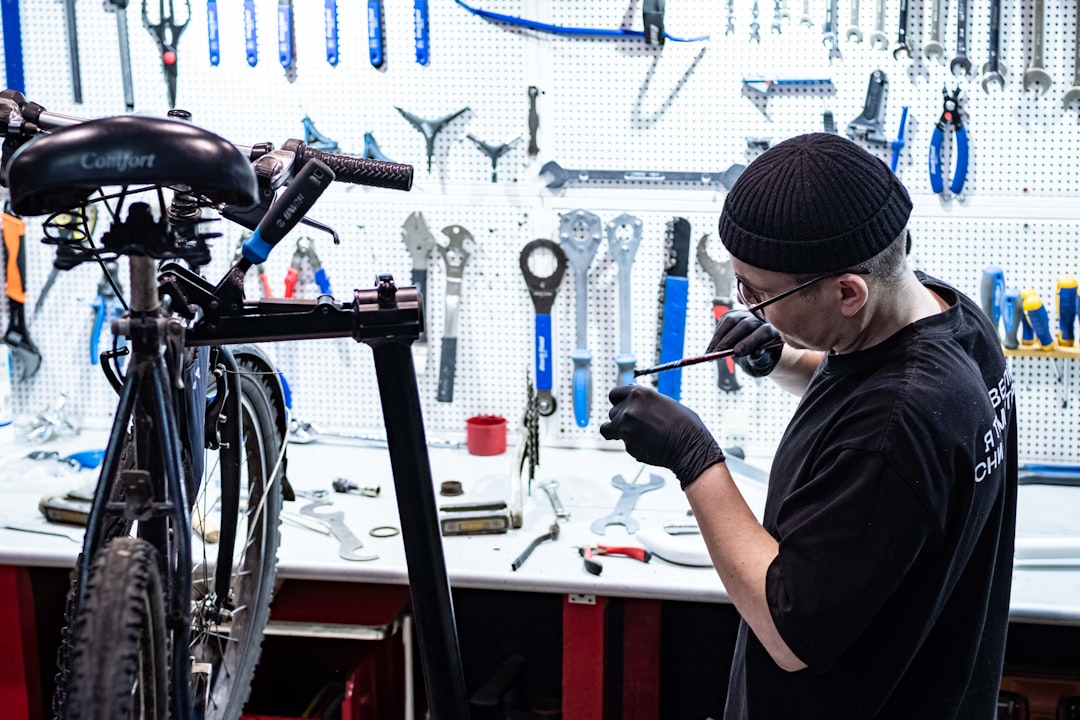

Engage prospects with a scan and streamline customer engagement with FREE QR code marketing tools by Sona – no strings attached!
Create a Free QR CodeFree consultation

No commitment

Engage prospects with a scan and streamline customer engagement with FREE QR code marketing tools by Sona – no strings attached!
Create a Free QR CodeFree consultation

No commitment
In today’s digitally driven world, QR codes have evolved from a novelty to a strategic powerhouse for QR code marketing that connects physical touchpoints to digital actions. For bike repair shops, QR codes provide a frictionless, app-free way to deliver faster service, capture more leads, and keep riders engaged after they leave the shop. They turn every sticker, sign, receipt, and event banner into an entry point for booking, reviews, and loyalty.
The result is a more responsive business that tracks every interaction, reduces missed opportunities, and moves customers from interest to action in seconds. You can modernize printed menus, clipboard forms, and manual processes with QR-enabled journeys that make each scan measurable, automatable, and valuable to your bottom line.

Bike repair businesses often rely on analog systems like paper intake forms, printed service menus, and verbal reminders for pick-up or reviews. These processes create friction for customers and leave no digital record for follow-up or retargeting. A customer might browse your tune-up menu or see a sign about mobile repairs, but without a simple way to take action, they walk out as an anonymous lead.
QR codes bridge this gap by converting offline interest into digital actions you can track. When placed at critical moments, they reduce the steps required for customers to book, ask questions, join loyalty programs, or leave feedback. The key is to deploy codes with intent, pair them with clear calls to action, and connect scan data to your CRM and marketing tools with the Sona QR product overview so nothing falls through the cracks.
This approach turns everyday surfaces into digital onramps. Even small shops can automate lead capture, track performance by location and channel, and nurture riders with timely offers. Tools like Sona QR are designed to support this transformation from first scan to closed revenue.

Bike repair shops face an offline-to-online attribution gap. Riders interact with you in the physical world: they see repair menus, attend tune-up events, or walk past your mobile van at a community ride. Without a digital bridge, those interactions leave no trail that can be measured or nurtured. As a result, it becomes hard to know which signage, campaigns, or locations are working, and which ones need improvement. The bike industry is actively evaluating QR’s role in this journey, as noted in this bike industry analysis.
QR codes solve this by turning any print or in-person interaction into a measurable digital moment. They remove the need for customers to manually type URLs or download an app. One scan immediately directs them to the right destination, such as a booking form, maintenance tips, or a contact card. With dynamic QR codes, you can even update offers without reprinting materials, which is ideal for seasonal tune-ups or limited-time promotions.
When you add attribution and automation, QR codes do more than share information. They power a repeatable system for engagement, measurement, and growth.

Selecting the right QR code format ensures every scan triggers the action you want. Bike repair customers often need quick answers, easy booking, and short follow-ups. Choosing the best format for each situation improves both customer experience and conversion.
In bike repair environments, the most useful formats are those that reduce friction for quick tasks. Web links are ideal for booking and offers, vCards for saving contact details at events, and SMS or email for quick service questions. Use Wi-Fi QR codes in lounges or waiting areas to encourage reviews or content consumption that enhances service trust.
When campaigns require edits or measurement, opt for dynamic QR codes so you can change destinations and track performance without redesigning or reprinting. Platforms like Sona QR centralize code creation and management so every format stays organized and up to date.

Growth in bike repair often comes from capturing intent at the moment it appears. Riders show interest in many places: while waiting for a tune-up, browsing accessories, attending a community ride, or reading a direct mail piece at home. QR codes let you turn those moments into measurable engagement.
Start by auditing the physical surfaces and situations where your shop already has attention. Then add clear, benefit-driven QR calls to action. Use unique codes for each placement so you can see what works best and optimize accordingly. For more ideas, browse Sona QR’s use case library.
Every placement should map to a measurable outcome. Centralize scan data so you can see which locations, messages, and offers produce the most bookings, reviews, and upsells. Then double down where performance is strongest.

The strongest QR use cases meet riders where they are and give them a quick path to value. Think about repetitive moments in your shop where customers ask the same questions, need fast access to information, or would likely say yes to an upsell if prompted at the right time.
Pair each use case with a destination built for mobile and a CTA that promises a clear benefit. Then feed scan data into your CRM so you can follow up with relevant offers and reminders based on what customers scanned.
When these signals feed your remarketing engine, you can send timely offers. For example, a rider who scanned “brake maintenance” content can receive a coupon for premium pads, and a customer who submitted a five-star review can be invited to your referral program.
Each QR scan carries valuable context: where it happened, what was offered, and when the rider engaged. If you deploy multiple unique codes across your shop and field operations, you can segment audiences based on intent and lifecycle stage without extra work for your staff.
This segmentation turns anonymous foot traffic into structured data that informs your follow-ups. You can tailor messages by bike type, service interest, and location. Over time, this yields stronger conversions and higher lifetime value because every message fits the rider’s needs.
To turn these segments into action across channels, use Sona’s Playbook on intent-driven retargeting.
QR codes add a connective tissue to your marketing. They let you measure print and in-person channels with the precision of digital and they unlock faster customer actions across every touchpoint. For a broader view on omnichannel planning, see this Forbes take on omnichannel QR. When integrated thoughtfully, QR codes turn your offline assets into a performance engine.
Map your channels, then decide how QR codes will drive people to the next step in each one. Keep destinations short and mobile-friendly, and use UTM parameters to track results across analytics tools and your CRM.
QR codes act as the offline onramp to your digital marketing. With a platform like Sona QR, you can centralize code creation, monitor performance by channel, and sync scan data with your CRM and ad platforms to keep every tactic coordinated.
A structured rollout helps you avoid scattered codes, unclear goals, and missing attribution. Use this five-step process to plan, launch, and scale QR campaigns that move the metrics that matter.
Clarify the business problem you want to solve. For bike repair shops, common goals include lifting appointment bookings from in-shop traffic, increasing post-service review volume, growing mobile van requests from neighborhoods near your route, or driving loyalty enrollments at checkout.
Choose the format based on the desired action and whether you need ongoing updates or tracking. Static codes are fixed and best for unchanging assets, while dynamic codes are editable and trackable.
Design for visibility and trust. Make the code easy to scan, on-brand, and clear in intent. Testing prevents friction that can destroy conversion.
Prioritize placements that are most likely to capture high-intent scans. Align the physical context with relevant destinations so scanners feel the immediate value.
Measurement turns QR from a novelty into a growth channel. Use analytics to refine copy, placement, and offers until you hit your targets.
Sona QR supports each step with dynamic codes, design controls, and unified analytics. You can spin up codes fast, deploy them across media, and monitor real outcomes such as bookings and reviews from a single dashboard.
Counting scans is not enough. Bike repair shops need to know whether a scan leads to a booked service, an upsell, a five-star review, or a loyalty activation. Without full-funnel visibility, you cannot allocate budget or staff time to the placements that produce the most value.
Advanced tracking helps you connect the dots. When you tie scans to visitor identities, CRM records, and point-of-sale data, you can attribute revenue to specific codes and campaigns. This allows you to defend spend, forecast demand, and optimize the customer journey across channels. For a deeper framework, explore multi-touch attribution.
Sona QR captures real-world engagement and syncs scan activity to your CRM. Sona.com can extend this data into multi-touch attribution so you can trace the path from first scan to purchase and understand which surfaces and messages create loyal customers.
Once you have your first campaigns live, scale what works. The following best practices help you grow scan volume, improve conversion, and make sure each placement pulls its weight. Focus on tactics that match your media mix and buyer journey.
These tactics keep momentum high and intent alive. Over time, they also build a data asset that reveals which customer segments, offers, and locations deliver the strongest lifetime value.
QR codes, when thoughtfully integrated, solve persistent challenges for bike repair shops. They transform anonymous in-person interest into measurable digital actions, reduce friction in booking and feedback, and equip your team to follow up with the right message at the right time. By turning every sign, sticker, and receipt into an interactive touchpoint, you create a connected customer experience from awareness to conversion.
The benefits compound as your deployment matures. With data flowing from scans to CRM to revenue attribution, you can optimize placements, craft more targeted offers, and build loyalty through timely reminders and rewards. For measurement strategy across channels, read Sona’s guide to offline attribution. Shops that embrace QR codes stand out by providing convenience, clarity, and continuity across the rider journey.
Sona QR gives bike repair shops everything needed to generate dynamic codes, centralize performance, and sync scan data with CRM and ad platforms. Start creating QR codes for free.
QR codes have transformed bike repair shops from simple service points into interactive hubs of customer engagement and growth. Whether it’s streamlining appointment bookings, providing instant access to maintenance guides, or promoting special offers, QR codes replace traditional barriers with seamless, mobile-friendly experiences that capture valuable data and drive repeat business. Imagine giving every customer the power to access personalized bike care tips or schedule services with a quick scan—enhancing satisfaction and loyalty like never before.
With Sona QR, bike repair shops can create dynamic, trackable QR codes in seconds, update campaigns instantly without reprinting, and link every scan directly to measurable outcomes like increased bookings and upsells. No more guesswork—just smart, actionable insights that turn every interaction into a revenue opportunity.
Start for free with Sona QR today and transform every scan into a customer connection, a service booked, or a sale closed.
The article does not list specific bike repair shops but suggests using mobile-friendly QR codes on signage and local event materials to find and book reliable nearby bike repair services.
Choose a bike repair shop that offers easy booking through QR codes, tracks customer engagement, provides clear service menus, and maintains digital follow-up systems for reviews and loyalty.
Mobile bike repair shops provide on-site repairs, emergency contact options, booking through QR codes on vans, and often include services like tune-ups, safety checks, and field maintenance.
Market your bike repair shop by deploying QR codes on physical assets like service menus, mobile vans, event signage, and direct mail to enable instant booking, feedback collection, and loyalty program sign-ups with measurable digital tracking.
Bike repair shops use QR codes for instant booking, post-service feedback surveys, sharing maintenance tips, saving contact details with vCards, offering guest Wi-Fi access, promoting app downloads, and tracking scan data to personalize follow-ups and offers.
Use Sona QR's trackable codes to improve customer acquisition and engagement today.
Create Your FREE Trackable QR Code in SecondsJoin results-focused teams combining Sona Platform automation with advanced Google Ads strategies to scale lead generation

Connect your existing CRM

Free Account Enrichment

No setup fees
No commitment required

Free consultation

Get a custom Google Ads roadmap for your business






Launch campaigns that generate qualified leads in 30 days or less.
